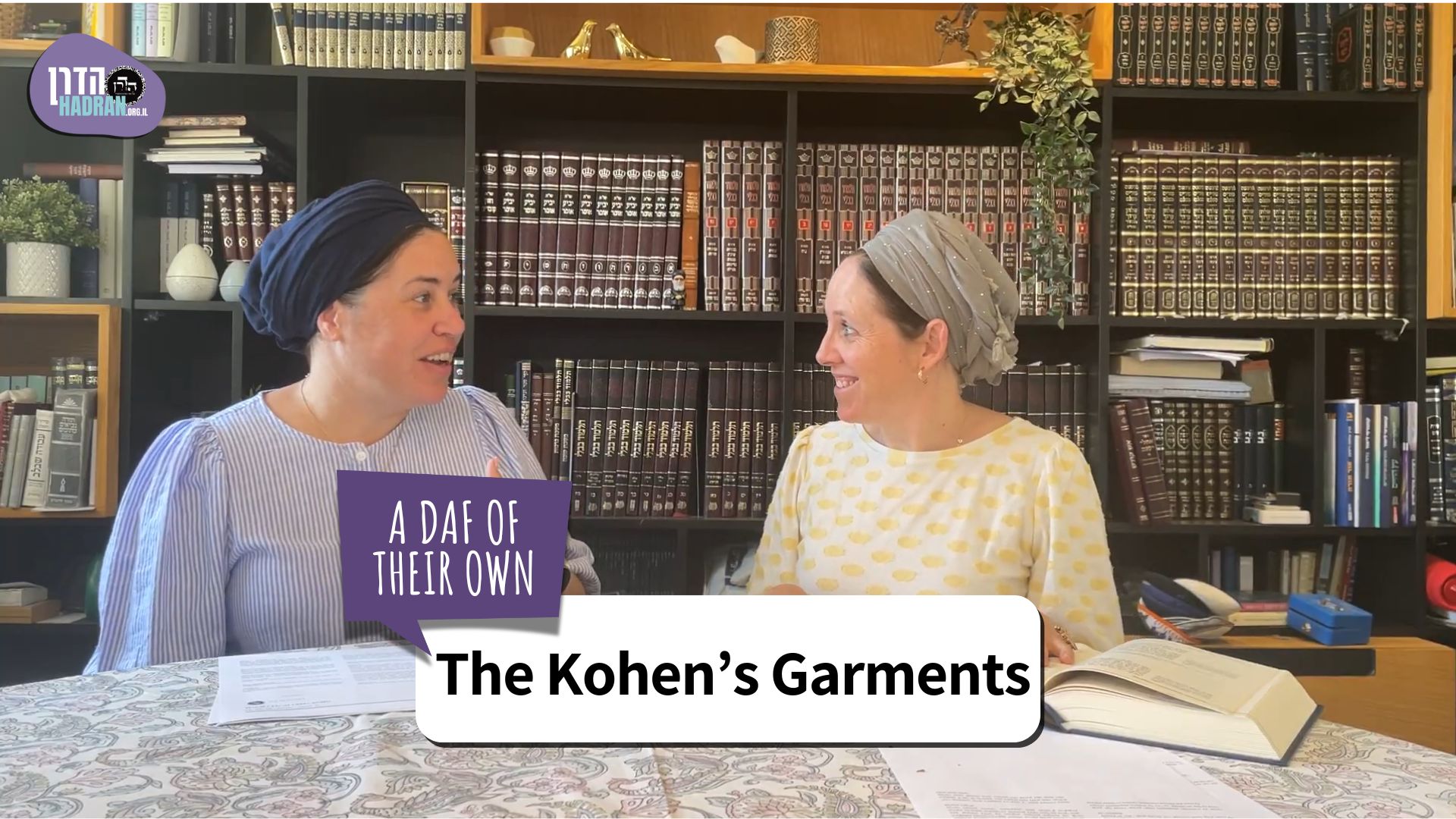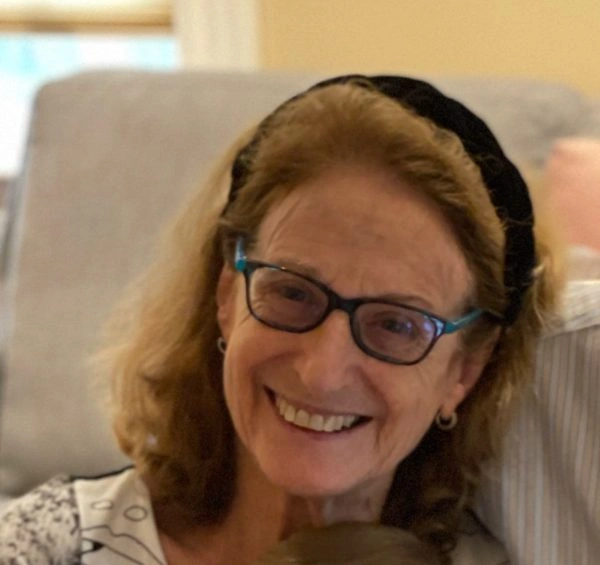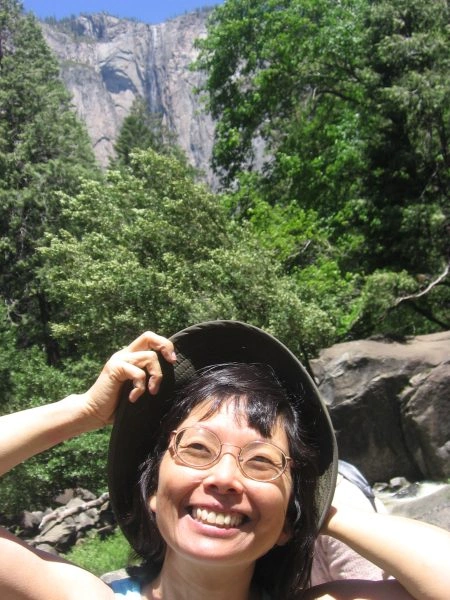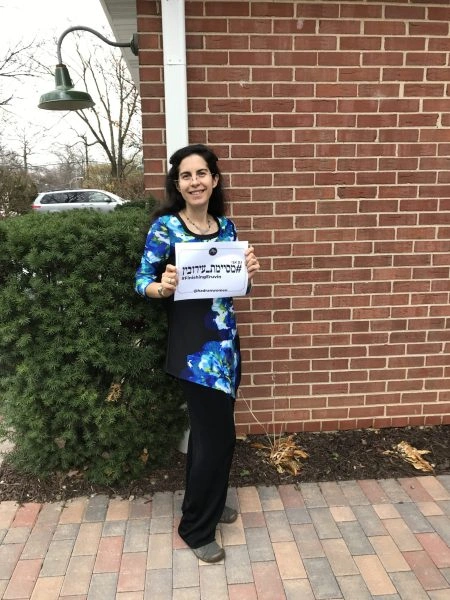Masechet Zevachim
Masechet Zevachim is sponsored by Esther Kremer in loving memory of her father, Manny Gross on his third yahrzeit. “He exemplified a path of holiness and purity, living with kedushah in his everyday life.”
Want to dedicate learning? Get started here:


Summary
Seder Kodashim Kit – Order Form
In the discussion regarding whether an improper intention, such as intending to eat or burn the meat outside its designated time, or to place the blood at the wrong time, during the act of dipping the finger into the blood of a sin offering brought on the inner altar renders the offering pigul, the Gemara presents two contradictory braitot. This suggests a tannaitic dispute over whether dipping the finger is akin to conveying the blood to the altar in a standard sacrifice.
Initially, the Gemara attempts to resolve the contradiction by aligning the braitot with the views of Rabbi Shimon and the Rabbis. According to this approach, both agree that dipping is equivalent to conveying the blood, but Rabbi Shimon holds that conveying is not an essential avoda (sacrificial service). However, this resolution is rejected, since Rabbi Shimon maintains that pigul does not apply to sacrifices whose blood is placed on the inner altar.
Ultimately, the Gemara concludes that the two braitot refer to different types of sin offerings – one brought on the inner altar and one on the outer altar. Dipping is essential for the inner altar offering, as the verse states, “and he dips his finger,” and therefore an improper intention during this act would render the offering pigul. In contrast, the outer altar offering does not require dipping, as the verse merely states, “the kohen takes the blood,” without mentioning dipping.
Reish Lakish explains that according to Rabbi Shimon, an improper intention regarding the type of sacrifice during the act of conveying the blood to the inner altar would disqualify the offering, since the animal cannot be slaughtered adjacent to the inner altar, making the act of conveying necessary. This seems to contradict Rabbi Shimon’s position that an “outside its time” intention does not render such a sacrifice pigul, which would imply that a mistaken intention regarding the type of sacrifice should also not disqualify it. Rabbi Yossi son of Rabbi Chanina resolves this by clarifying that Rabbi Shimon agrees that an “outside its time” intention disqualifies the sacrifice, even though it does not render it pigul. The Gemara further derives that an “outside its place” intention would also disqualify this type of offering.
Rava explores Rabbi Shimon’s position, as interpreted by Reish Lakish, regarding conveying the blood to the inner altar as being essential. He considers various scenarios depending on whether Rabbi Shimon accepts other positions. For instance, if Rabbi Shimon agrees with his son’s view that kodshei kodashim may be slaughtered between the ulam and the altar, then improper intention would only disqualify the sacrifice from the entrance to the ulam, since slaughtering adjacent to the ulam is permissible. Rava also discusses the case of carrying frankincense from the shulchan (table) in the sanctuary to burn it on the outer altar. The point at which intention disqualifies the offering depends on differing views regarding the sanctity of the ulam and the azara.
Abaye asks Rav Chisda whether the blood is disqualified if conveyed by a non-kohen. Rav Chisda responds that it is not, citing a verse as proof. However, Rav Sheshet presents a braita suggesting the opposite. Raba and Rav Yosef argue that the answer depends on the dispute between Rabbi Shimon and the Rabbis. Abaye challenges their position, and Ulla quotes Rabbi Elazar’s ruling that even Rabbi Shimon would disqualify conveying by a non-kohen.
Another question arises: Is conveying without moving one’s feet considered valid conveying? After three unsuccessful attempts to prove this from various sources, Ulla rules in the name of Rabbi Yochanan that valid conveying requires movement of the feet.
Today’s daily daf tools:
Masechet Zevachim
Masechet Zevachim is sponsored by Esther Kremer in loving memory of her father, Manny Gross on his third yahrzeit. “He exemplified a path of holiness and purity, living with kedushah in his everyday life.”
Today’s daily daf tools:
Delve Deeper
Broaden your understanding of the topics on this daf with classes and podcasts from top women Talmud scholars.
New to Talmud?
Check out our resources designed to help you navigate a page of Talmud – and study at the pace, level and style that fits you.
The Hadran Women’s Tapestry
Meet the diverse women learning Gemara at Hadran and hear their stories.
Zevachim 14
כֹּל שֶׁאֵינוֹ עַל מִזְבֵּחַ הַחִיצוֹן כִּשְׁלָמִים – אֵין בּוֹ מִשּׁוּם פִּיגּוּל!
that any offering whose blood is not sprinkled on the external altar like a peace offering is not subject to the halakhot of piggul? If so, piggul does not apply to inner sin offerings at all.
אֶלָּא הָא וְהָא רַבָּנַן, וְלָא קַשְׁיָא; כָּאן בְּחַטָּאוֹת הַחִיצוֹנוֹת, כָּאן בְּחַטָּאוֹת הַפְּנִימִיּוֹת.
Rather, both this baraita and that baraita are in accordance with the opinion of the Rabbis; and the apparent contradiction between them is not difficult. Here, the baraita that maintains that one cannot render the offering piggul while dipping his finger in the blood is referring to the external sin offerings, since dipping one’s finger in order to sprinkle the blood on the external altar is not considered an essential rite. There, the baraita that maintains that one can render the offering piggul while performing this rite is referring to the inner sin offerings.
חַטָּאוֹת הַחִיצוֹנוֹת – פְּשִׁיטָא, לָא כְּתִיב בְּהוּ ״וְטָבַל״!
The Gemara asks: Isn’t it obvious that one cannot render the offering piggul while dipping his finger in the blood of the external sin offerings? The statement: “And the priest shall dip his finger in the blood” (Leviticus 4:6), is not written with regard to these offerings. Since it is clearly not an essential rite, why was it necessary for the baraita to teach that improper intent while performing it cannot render the offering piggul?
אִצְטְרִיךְ; סָלְקָא דַּעְתָּךְ אָמֵינָא: הוֹאִיל וּכְתִיב ״וְלָקַח״ – וְאִי אָתֵי קוֹף רָמֵי לְהוּ אַיְּדֵיהּ בָּעֵי לְמִישְׁקַל זִימְנָא אַחֲרִיתִי – כְּמַאן דִּכְתִיב ״וְטָבַל״ דָּמֵי;
The Gemara answers: It was necessary for the baraita to teach this, as otherwise it might enter your mind to say that since it is written with regard to an external sin offering: “And the priest shall take of the blood of the sin offering with his finger” (Leviticus 4:34), and therefore if a monkey comes and places blood on the hand of the priest the priest must take blood from the vessel again to perform the mitzva as stated in the verse, it is considered as though the statement: And the priest shall dip his finger in the blood, is written with regard to an external sin offering as well.
קָא מַשְׁמַע לַן: לְהָכִי לָא כְּתִיב ״וְטָבַל״ – דְּמַשְׁמַע הָכִי וּמַשְׁמַע הָכִי.
Therefore, the baraita teaches us that dipping one’s finger in the blood of an external sin offering is an inessential rite and one cannot render the offering piggul while performing it. As it is for this reason that the phrase: And the priest shall dip his finger in the blood, is not written with regard to this offering, but rather: And the priest shall take of the blood of the sin offering with his finger, which indicates this halakha, that the priest must actively take the blood in his hand, and also indicates that halakha, that dipping one’s finger in the blood is not an essential rite and cannot render the offering piggul.
רַבִּי שִׁמְעוֹן מַכְשִׁיר בְּהִילּוּךְ. אָמַר רַבִּי שִׁמְעוֹן בֶּן לָקִישׁ: מוֹדֶה רַבִּי שִׁמְעוֹן בְּהוֹלָכַת חַטָּאוֹת הַפְּנִימִיּוֹת שֶׁמַּחְשָׁבָה פּוֹסֶלֶת בָּהּ, הוֹאִיל וַעֲבוֹדָה שֶׁאֵין יָכוֹל לְבַטְּלָהּ.
§ The mishna teaches that Rabbi Shimon deems the offering fit if the prohibited intent was during the rite of conveying the blood to the altar. Rabbi Shimon ben Lakish says: Rabbi Shimon concedes that prohibited intent during the conveying of the blood of the inner sin offerings disqualifies them, since with regard to those offerings, it is an indispensable rite. Because the blood must be sprinkled inside the Sanctuary and the offering cannot be slaughtered inside the Sanctuary, conveying the blood into the Sanctuary is always necessary for such offerings.
וְהָאָמַר רַבִּי שִׁמְעוֹן: כׇּל שֶׁאֵינוֹ עַל מִזְבֵּחַ הַחִיצוֹן כִּשְׁלָמִים, אֵין חַיָּיבִין עָלָיו מִשּׁוּם פִּיגּוּל!
The Gemara asks: But doesn’t Rabbi Shimon say that with regard to any offering whose blood is not sprinkled on the external altar like a peace offering, one is not liable to be punished with karet for eating it, due to the prohibition of piggul? In other words, the halakha of piggul does not apply to inner sin offerings at all.
אָמַר רַבִּי יוֹסֵי בְּרַבִּי חֲנִינָא: מוֹדֶה הָיָה לִפְסוֹל מִקַּל וָחוֹמֶר – וּמָה שֶׁלֹּא לִשְׁמָן, שֶׁהוּכְשְׁרוּ בִּשְׁלָמִים – פָּסוּל בְּחַטָּאת; חוּץ לִזְמַנּוֹ, שֶׁפּוֹסֵל בִּשְׁלָמִים – אֵינוֹ דִּין שֶׁיִּפְסוֹל בְּחַטָּאוֹת?
Rabbi Yosei, son of Rabbi Ḥanina, says: Rabbi Shimon concedes that although intent to consume an inner sin offering after its designated time does not render it piggul, it disqualifies the offering, due to an a fortiori inference: Just as sacrifice not for its sake, which is valid in the case of a peace offering, is nevertheless not valid in the case of a sin offering, as stated in the mishna (2a), so too, isn’t it logical that sacrifice with intent to consume it beyond its designated time, which disqualifies peace offerings, should disqualify sin offerings?
וְאַשְׁכְּחַן חוּץ לִזְמַנּוֹ, חוּץ לִמְקוֹמוֹ מְנָלַן?
The Gemara asks: And we found a source for the halakha that intent to consume an inner sin offering beyond its designated time disqualifies it according to Rabbi Shimon. From where do we derive that intent to consume it outside its designated area also disqualifies it?
אִי מִחוּץ לִזְמַנּוֹ – מָה לְחוּץ לִזְמַנּוֹ, שֶׁכֵּן כָּרֵת!
If we derive it from the case of intent to consume it beyond its designated time, one may respond: What is notable about intent to consume it beyond its designated time? It is notable in that it can render an offering piggul, for partaking of which one is liable to receive karet.
אִי מִשֶּׁלֹּא לִשְׁמָהּ – שֶׁכֵּן נוֹהֵג בְּבָמָה!
If we derive it from the case of intent not for its sake, one may respond: What is notable about sacrifice not for its sake? It is notable in that this disqualification applies even to sacrifice on a private altar during the era when such altars were permitted. By contrast, intent to consume the offering outside its designated area is irrelevant to sacrifice on a private altar, which has no designated area.
(חִיּוּב) שֶׁלֹּא לִשְׁמָן בְּמַאי נוֹהֵג – בְּפֶסַח וְחַטָּאת; פֶּסַח וְחַטָּאת בְּבָמָה לֹא קָרְבוּ.
The Gemara answers: With regard to what offering does disqualification due to intent not for its sake apply? It applies to a Paschal offering and a sin offering. Since a Paschal offering and a sin offering may not be sacrificed on a private altar, this factor is irrelevant. One may therefore derive from the case of intent not for its sake that intent to consume the offering outside its designated area disqualifies it.
וְאִיבָּעֵית אֵימָא: הֶקֵּישָׁא הוּא; ״שְׁלִישִׁי״ – זֶה חוּץ לִזְמַנּוֹ, ״פִּיגּוּל״ – זֶה חוּץ לִמְקוֹמוֹ.
And if you wish, say that it is derived from the juxtaposition of the halakha of intent to consume the offering beyond its designated time with the halakha of intent to consume it outside its designated area. The verse states: “And if any of the flesh of the sacrifice of his peace offerings is at all eaten on the third day, it shall not be accepted, neither shall it be imputed to the one who offers it; it shall be an abhorred thing [piggul]” (Leviticus 7:18). This statement: “On the third day, it shall not be accepted,” is referring to intent to consume the offering beyond its designated time; and this seemingly superfluous statement: “Neither shall it be imputed to the one who offers it; it shall be piggul,” is referring to intent to consume it outside its designated area. Such juxtaposition indicates that there are parallel halakhot in the two cases even if they are dissimilar.
אָמַר רָבָא: אִם תִּימְצֵי לוֹמַר רַבִּי שִׁמְעוֹן סָבַר לַהּ כִּבְרֵיהּ, דְּאָמַר: בֵּין הָאוּלָם וְלַמִּזְבֵּחַ – צָפוֹן; אֵין מַחְשָׁבָה מוֹעֶלֶת בְּהוֹלָכַת חַטָּאוֹת הַפְּנִימִיּוֹת, אֶלָּא מִפֶּתַח אוּלָם וְלִפְנִים.
§ Rava says: If you say that Rabbi Shimon holds in accordance with the opinion of his son Rabbi Elazar, who says that the area between the Entrance Hall and the altar is considered part of the north of the Temple courtyard, the only place where a sin offering may be slaughtered, he must also hold that prohibited intent while conveying the blood of the inner sin offerings is effective to disqualify them only from the doorway of the Entrance Hall inward. Prohibited intent before the priest reaches the doorway of the Entrance Hall does not disqualify the offering, as conveying the blood to the doorway is not necessary; the offering could have been slaughtered at the doorway in the first place.
וְאִם תִּמְצֵי לוֹמַר סָבַר לַהּ כְּרַבִּי יְהוּדָה, דְּאָמַר: תּוֹךְ עֲזָרָה מְקַדֵּשׁ; אֵין מַחְשָׁבָה מוֹעֶלֶת בְּהוֹלָכַת סִילּוּק בָּזִיכִין, אֶלָּא מִפֶּתַח הֵיכָל וְלַחוּץ.
And if you say that Rabbi Shimon holds in accordance with the opinion of Rabbi Yehuda, who says that the interior of the Temple courtyard sanctifies offerings, i.e., that offerings can be sacrificed on the courtyard floor as if it were part of the altar, prohibited intent while conveying the removed bowls of frankincense from the table in the Sanctuary to burn them on the external altar is effective to disqualify them only while conveying them from the doorway of the Sanctuary outward to the Entrance Hall. Since the table can be placed anywhere in the Sanctuary, conveying the bowls of frankincense in the Sanctuary itself is unnecessary, and once the priest exits the Entrance Hall to the Temple courtyard, the frankincense could theoretically be burned immediately.
וְאִם תִּמְצֵי לוֹמַר, סָבַר: קְדוּשַּׁת הֵיכָל וְאוּלָם – חֲדָא הִיא; אֵין מַחְשָׁבָה מוֹעֶלֶת אֶלָּא מִפֶּתַח אוּלָם וְלַחוּץ.
Rava continues: And if you say that Rabbi Shimon also holds that the sanctity of the Sanctuary and the Entrance Hall are one and the same, and the table can be placed in the Entrance Hall as well, prohibited intent is effective only while conveying the frankincense from the doorway of the Entrance Hall outward, i.e., in the doorway of the Entrance Hall itself.
וְאִם תִּמְצֵי לוֹמַר תּוֹךְ הַפֶּתַח כְּלִפְנִים; אֵין מַחְשָׁבָה מוֹעֶלֶת אֲפִילּוּ פְּסִיעָה אַחַת, אֶלָּא בִּכְדֵי הוֹשָׁטַת יָדוֹ.
And if you say that he also holds that inside the doorway is considered like inside the Entrance Hall, then the table can be placed in the doorway too, and prohibited intent is not effective while conveying the frankincense even one step. Rather, it is effective only during the moment when the frankincense is taken out of the doorway to the courtyard, the time it takes the priest to stretch out his hand to place the bowls on the courtyard floor.
וְאִם תִּמְצֵי לוֹמַר, סָבַר: הוֹלָכָה שֶׁלֹּא בָּרֶגֶל – לֹא שְׁמָהּ הוֹלָכָה; אֵין מַחְשָׁבָה מוֹעֶלֶת כְּלָל.
And if you say that he also holds that conveying an offering not by foot is not considered conveying, prohibited intent is not effective at all while conveying the bowls of frankincense.
אֲמַר לֵיהּ אַבָּיֵי לְאָמוֹרֵיהּ דְּרַב חִסְדָּא, בְּעִי מִינֵּיהּ מֵרַב חִסְדָּא: הוֹלָכָה בְּזָר – מַהוּ?
§ Abaye said to Rav Ḥisda’s interpreter: Ask Rav Ḥisda for me: What is the halakha with regard to a non-priest conveying the blood? Is the offering disqualified, as in a case where a non-priest performs any other sacrificial rite that may performed only by priests?
אֲמַר לֵיהּ: כְּשֵׁרָה, וּמִקְרָא מְסַיְּיעֵנִי – ״וַיִּשְׁחֲטוּ אֶת הַפֶּסַח, וַיִּזְרְקוּ הַכֹּהֲנִים אֶת הַדָּם מִיָּדָם, וְהַלְוִיִּם מַפְשִׁיטִים״.
Rav Ḥisda said to him: The offering remains fit, and a verse supports my ruling: “And they slaughtered the Paschal offering, and the priests sprinkled the blood, which they received of their hand, and the Levites flayed them” (II Chronicles 35:11). Apparently, priests are required only for the sprinkling of the blood on the altar and later rites. Just as slaughter may be performed by non-priests, so can the collection and conveying of the blood be performed by them.
מֵתִיב רַב שֵׁשֶׁת: זָר, וְאוֹנֵן,
Rav Sheshet raises an objection from a baraita: If a non-priest, or an acute mourner,
שִׁיכּוֹר, וּבַעַל מוּם; בְּקַבָּלָה בְּהוֹלָכָה בִּזְרִיקָה – פָּסוּל. וְכֵן יוֹשֵׁב, וְכֵן שְׂמֹאל! תְּיוּבְתָּא.
a drunk priest, or a blemished priest performs the rites of collection, conveying or sprinkling the blood, the offering is disqualified. And likewise, it is disqualified if a priest performs any of these rites while sitting. And this is likewise the halakha if a priest performs any of these rites with his left hand. The Gemara concludes: This is a conclusive refutation of Rav Ḥisda’s ruling; if a non-priest conveys the blood, it is disqualified.
וְהָא רַב חִסְדָּא קְרָא קָאָמַר!
The Gemara asks: But didn’t Rav Ḥisda state a verse as proof that the offering is not disqualified? The verse states that the priests sprinkled the blood after receiving it from non-priests.
דְּעָבֵיד מַעֲשֶׂה אִצְטְבָא.
The Gemara answers: The verse described a case where the non-priests served as a bench [itztaba]. The priests would give the blood to the non-priests to hold it for them and would then take it and sprinkle the blood. The non-priests would not convey the blood to the altar.
רַבָּה וְרַב יוֹסֵף דְּאָמְרִי תַּרְוַיְיהוּ: הוֹלָכָה בְּזָר – מַחְלוֹקֶת רַבִּי שִׁמְעוֹן וְרַבָּנַן; רַבִּי שִׁמְעוֹן דְּאָמַר: עֲבוֹדָה שֶׁאֶפְשָׁר לְבַטְּלָהּ, לָאו עֲבוֹדָה הִיא – כְּשֵׁרָה בְּזָר. לְרַבָּנַן – פְּסוּלָה.
Rabba and Rav Yosef both say that the case of a non-priest conveying the blood is subject to a dispute between Rabbi Shimon and the Rabbis. According to Rabbi Shimon, who says that a dispensable rite is not classified as a true rite and therefore does not disqualify the offering if performed with prohibited intent, the offering is fit even if the conveying of the blood is performed by a non-priest. According to the Rabbis, who hold that a dispensable rite is classified as a true rite, the conveying of the blood is not valid if performed by a non-priest.
אֲמַר לֵיהּ אַבָּיֵי: וְהָא שְׁחִיטָה, דַּעֲבוֹדָה שֶׁאִי אֶפְשָׁר לְבַטְּלָהּ – וּכְשֵׁרָה בְּזָר! אֲמַר לֵיהּ: שְׁחִיטָה לָאו עֲבוֹדָה הִיא.
Abaye said to him: But what about slaughter, which is an indispensable rite, and yet the offering is fit even if it is performed by a non-priest? He said to Abaye: Slaughter, though indispensable, is not classified as a sacrificial rite at all. Therefore it need not be performed by a priest.
וְלָא?! וְהָאָמַר רַבִּי זֵירָא אָמַר רַב: שְׁחִיטַת פָּרָה בְּזָר – פְּסוּלָה; וְאָמַר רַב עֲלַהּ: ״אֶלְעָזָר״ וְ״חוּקָּה״ כְּתִיב בַּהּ!
The Gemara asks: And is it not? But doesn’t Rabbi Zeira say that Rav says: If the slaughter of a red heifer is performed by a non-priest, it is not valid? And Rav said about this halakha: It is derived from the phrases: “Elazar the priest” (Numbers 19:3), and: “Statute” (Numbers 19:2), which are written with regard to the red heifer. The mention of Elazar indicates that slaughter must be performed by a priest, and the term “statute” indicates that one may not deviate from any of the details of the service as delineated in the verses. If one does, the heifer is disqualified.
שָׁאנֵי פָּרָה, דְּקׇדְשֵׁי בֶּדֶק הַבַּיִת הִיא.
The Gemara answers: The red heifer is different, as it is not an offering; it has the sanctity of items consecrated for Temple maintenance. The halakhot that govern its service therefore differ from those of offerings proper.
וְלָאו כָּל דְּכֵן הוּא – קׇדְשֵׁי בֶּדֶק הַבַּיִת הָוְיָא עֲבוֹדָה, קׇדְשֵׁי מִזְבֵּחַ לָאו עֲבוֹדָה הִיא?!
The Gemara asks: But does this not prove the point all the more? If slaughtering an animal consecrated for Temple maintenance is tantamount to a sacrificial rite, can slaughtering offerings, which are sacrificed on the altar, not be considered a sacrificial rite?
אָמַר רַב שִׁישָׁא בְּרֵיהּ דְּרַב אִידִי: מִידֵּי דְּהָוֵה אַמַּרְאוֹת נְגָעִים; דְּלָאו עֲבוֹדָה הִיא, וּבָעֲיָא כְּהוּנָּה.
Rav Sheisha, son of Rav Idi, said: The slaughter of a red heifer is considered just as it is in the case of shades of leprous marks, which are deemed ritually pure or impure by a priest. Although this is not a sacrificial rite, it still requires a member of the priesthood to perform it. Therefore, the requirement that the red heifer be slaughtered by a priest does not prove that it is classified as a sacrificial rite.
וַהֲרֵי הוֹלָכַת אֵבָרִים לַכֶּבֶשׁ, דַּעֲבוֹדָה שֶׁאֶפְשָׁר לְבַטְּלָהּ הִיא – וּפְסוּלָה בְּזָר; דִּכְתִיב: ״וְהִקְרִיב הַכֹּהֵן אֶת הַכֹּל וְהִקְטִיר הַמִּזְבֵּחָה״ – וְאָמַר מָר: זוֹ הוֹלָכַת אֵבָרִים לַכֶּבֶשׁ!
The Gemara further challenges the premise of Rabba and Rav Yosef that a dispensable rite can be performed by a non-priest: But what about conveying the limbs of the offering to the ramp, which is a dispensable rite, as the offering can be slaughtered next to the ramp? And nevertheless, if it is performed by a non-priest, the offering is disqualified, as it is written: “And the priest shall sacrifice the whole, and make it smoke upon the altar” (Leviticus 1:13); and the Master says: This is referring to conveying the limbs to the ramp.
הֵיכָא דְּגַלִּי גַּלִּי, וְהֵיכָא דְּלָא גַּלִּי לָא גַּלִּי.
The Gemara answers: In a case where the verse explicitly revealed that a rite must be performed by a priest, it revealed it; but in a case where the Torah did not reveal it, it did not reveal it. With regard to conveying the blood, the Torah does not state explicitly that a priest is required.
וְלָאו כָּל דְּכֵן הוּא? וּמָה הוֹלָכַת אֵבָרִים לַכֶּבֶשׁ, דְּלָא מְעַכְּבָא כַּפָּרָה – בָּעֲיָא כְּהוּנָּה; הוֹלָכַת דָּם, דִּמְעַכְּבָא כַּפָּרָה – [לֹא כׇּל שֶׁכֵּן] (מִיבַּעְיָא)?!
The Gemara challenges: But is it not all the more so obvious? Just as conveying the limbs to the ramp requires that the conveyor be a member of the priesthood, even though it does not prevent atonement if not performed at all, since atonement was already effected by sprinkling the blood, all the more so is it not clear that concerning conveying the blood and sprinkling it on the altar, where the failure to convey it and sprinkle it on the altar prevents atonement, it must be that the conveyor be a member of the priesthood? This difficulty remains unresolved.
אִיתְּמַר נָמֵי, אָמַר עוּלָּא אָמַר רַבִּי אֶלְעָזָר: הוֹלָכָה בְּזָר פְּסוּלָה, אֲפִילּוּ לְרַבִּי שִׁמְעוֹן.
It was also stated that Ulla says that Rabbi Elazar says: In a case where conveying the blood is performed by a non-priest, the offering is disqualified, even according to Rabbi Shimon.
אִיבַּעְיָא לְהוּ: הוֹלָכָה שֶׁלֹּא בָּרֶגֶל, שְׁמָהּ הוֹלָכָה אוֹ לֹא שְׁמָהּ הוֹלָכָה?
§ A dilemma was raised before the Sages: Is conveying the blood not by foot but rather by passing it by hand to another priest considered conveying, or is it not considered conveying? Can the rite be performed in this manner?
תָּא שְׁמַע: וְכֵן יוֹשֵׁב, וְכֵן שְׂמֹאל – פָּסוּל; הָא עוֹמֵד דּוּמְיָא דְּיוֹשֵׁב – כָּשֵׁר!
The Gemara suggests: Come and hear evidence from the baraita: And likewise, if the priest collected, conveyed, or sprinkled the blood while sitting, and likewise, if he performed any of these rites with his left hand, the offering is disqualified. Since only sitting is listed, one consequently infers that if the priest conveyed the blood while standing but in a manner similar to sitting, i.e., by outstretching his hand without walking, the offering is fit. Evidently, conveying the blood does not require walking.
דִּלְמָא יוֹשֵׁב – דְּקָשָׁיֵיף מֵישָׁף, עוֹמֵד דּוּמְיָא דְּיוֹשֵׁב – דְּנָיֵיד פּוּרְתָּא.
The Gemara rejects this inference: Perhaps when the baraita states: Sitting, it is referring to one who conveys the blood by moving toward the altar while sitting on the ground in such a manner that he rubs himself against the floor of the courtyard as he pulls himself forward. If so, the parallel case of standing in a manner similar to sitting is a case where the priest moves forward a bit. Perhaps if he does not move at all and merely outstretches his hand, the rite is not valid.
תָּא שְׁמַע: שָׁחַט יִשְׂרָאֵל וְקִבֵּל הַכֹּהֵן, נְתָנוֹ לַחֲבֵירוֹ, וַחֲבֵרוֹ לַחֲבֵירוֹ!
The Gemara suggests: Come and hear a proof from a mishna (Pesaḥim 64a): An Israelite would slaughter the Paschal offering, and a priest would collect the blood. The priests would be lined up from the place where the lamb was slaughtered until the altar. The priest who collected the blood would immediately hand it to another priest standing next to him, and the other priest would pass it to another, and so forth, until it would reach the altar. Evidently, the blood can be passed from hand to hand; it need not be conveyed by foot.
הָתָם נָמֵי דְּנָיְידִי פּוּרְתָּא. וּמַאי קָא מַשְׁמַע לַן? ״בְּרׇב עָם הַדְרַת מֶלֶךְ״.
The Gemara answers: There, too, the priests would move a bit with their feet while passing the blood forward. The Gemara asks: But what is the mishna teaching us in this description, if not that the blood need not be conveyed by foot? The Gemara answers: It teaches that: “In the multitude of people is the king’s glory” (Proverbs 14:28). It honors God when the Temple service is performed by a multitude of priests.
תָּא שְׁמַע: קִבֵּל הַכָּשֵׁר וְנָתַן לַפָּסוּל – יַחְזִיר לַכָּשֵׁר!
The Gemara suggests: Come and hear another resolution from a mishna (32a): If a priest who is fit for Temple service collected the blood in a vessel and gave it to an unfit individual standing next to the altar, that individual should return it to the fit priest, so that he may perform a complete act of conveying the blood to the altar. Evidently, the blood must be conveyed to the altar by foot. If conveying by hand were valid, another priest could simply take the blood from the unfit person and complete the conveying of the blood to the altar.
אֵימָא: יַחְזוֹר הַכָּשֵׁר וִיקַבְּלָהּ.
The Gemara rejects this inference: Say that the wording of the mishna should be emended; instead of stating that the unfit person should return the vessel to the fit priest, it should state that the fit priest, even another priest, should then receive it from the unfit person. If so, the mishna proves nothing about conveying by hand.
אִיתְּמַר, אָמַר עוּלָּא אָמַר רַבִּי יוֹחָנָן: הוֹלָכָה שֶׁלֹּא בָּרֶגֶל – לֹא שְׁמָהּ הוֹלָכָה.
It was stated: Ulla says that Rabbi Yoḥanan says: Conveying the blood not by foot is not considered conveying.






















